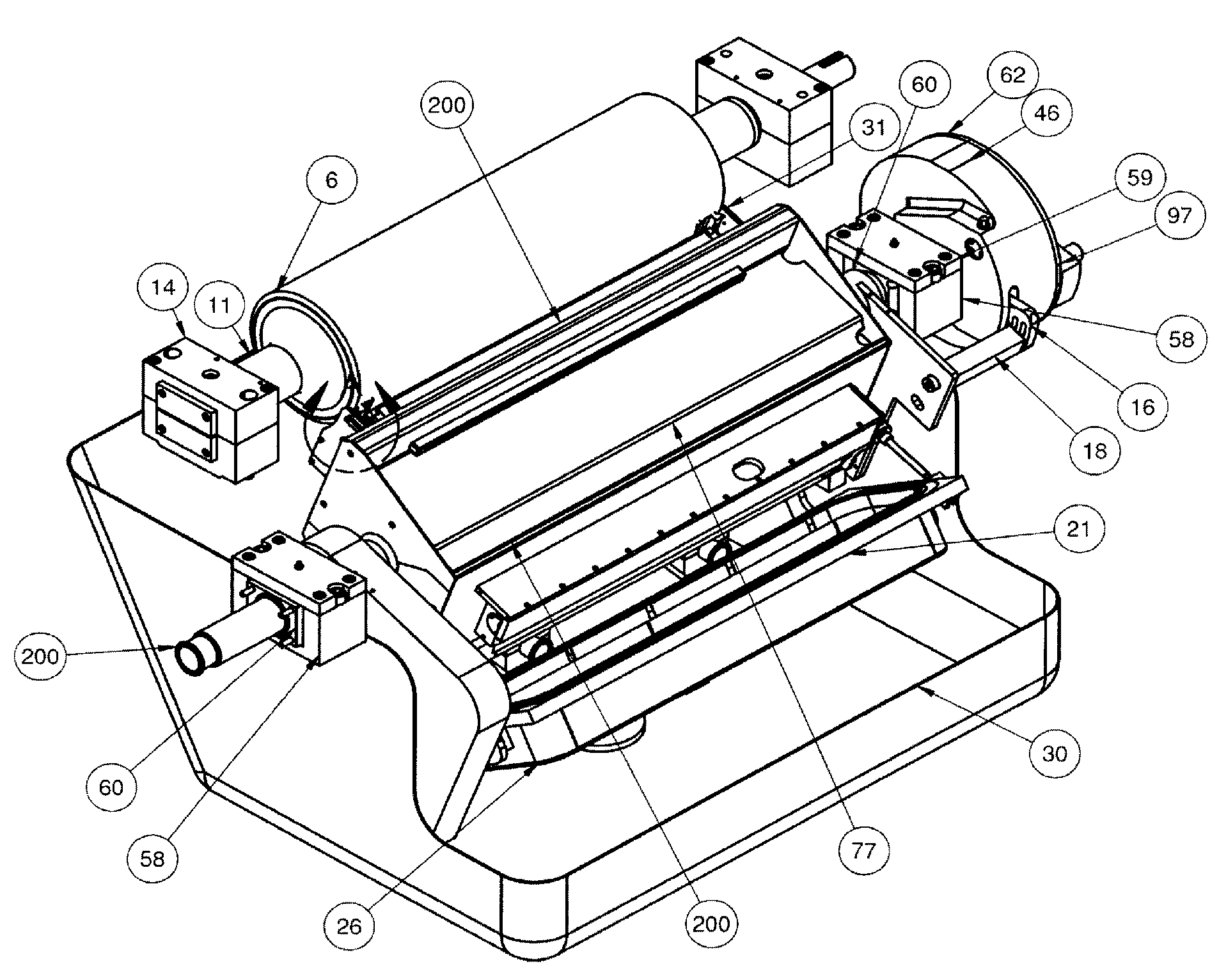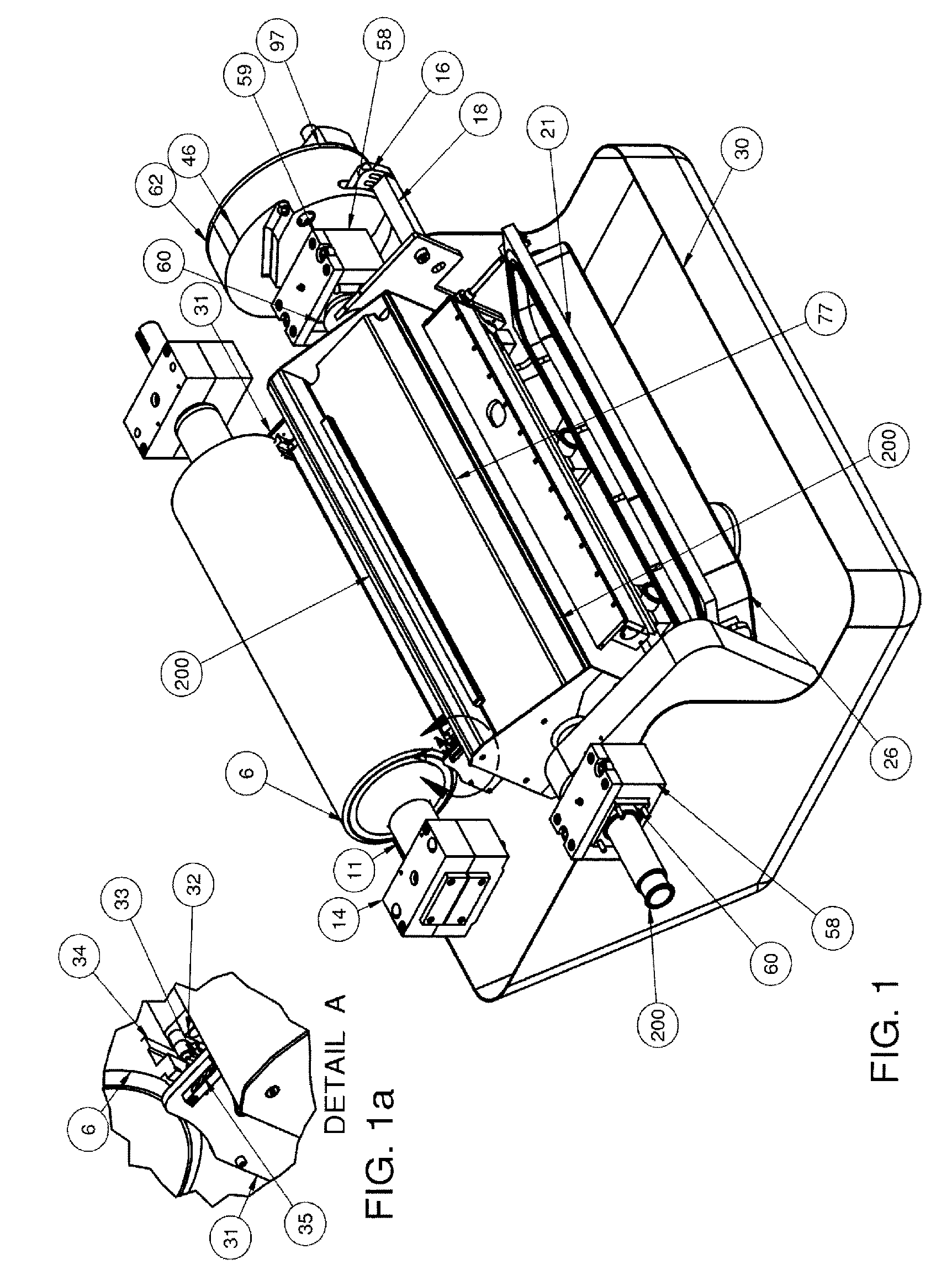Coating apparatus and method
a coating apparatus and coating technology, applied in the direction of coatings, movable spraying apparatus, pretreated surfaces, etc., can solve the problems of high cost, waste of money, and difficult to apply a coating that is too thin or too thick, so as to minimize spraying, spatter, and slinging
- Summary
- Abstract
- Description
- Claims
- Application Information
AI Technical Summary
Benefits of technology
Problems solved by technology
Method used
Image
Examples
first embodiment
[0056]FIG. 18 is a perspective view of an end seal design according to the invention. Omitted for clarity in FIG. 18 are the back seal 7 and trailing edge of the nozzle 55, which if shown would extend to the lower left in FIG. 18. First seal lip 111 may be seen, along with second seal lip 112 and third seal lip 113. Applicator roll 6 is likewise omitted for clarity in FIG. 18. Its direction of movement is toward the lower left in FIG. 18.
[0057]FIG. 20 is an exploded view of the end seal of FIG. 18. In this view we can see a springy section 93 which tends to urge seal top 34 (which incorporates lips 111, 112, 113) upwards toward the roll 6 that is omitted for clarity in this FIG. 20. In addition, a spring 38 permits an adjustable force upwards on the end of the seal top 34 as well (that is, on the trailing edge of the seal), again toward the roll 6. This is the same spring 38 the exterior portion of which which was visible in FIG. 3.
[0058]It is evident from FIG. 18 that the first sea...
second embodiment
[0059]FIG. 22 shows a perspective view of an end seal design according to the invention. As in FIG. 20, back seal 7 and trailing edge of nozzle 55 extend toward the lower left in FIG. 22 and are omitted for clarity. As detailed in FIG. 23, there are again lips 111, 112, 113 which help to seal the end of the nozzle. As in FIG. 20, a spring 38 permits adjustment of the force upwards, on the end of the seal at its trailing edge, toward the applicator roll 6, omitted for clarity. As in FIG. 20, the applicator roll 6, if visible, would move downwards and to the left in FIG. 22.
[0060]The invention, as portrayed in the figures, will now be discussed in great detail, starting with the nozzle locking and angle adjustment features and then turning to the end seal features.
Nozzle Locking and Angle Adjustment
[0061]The pressure feed application system bar locking device 97 is shown in FIGS. 1, 4, 5, 6, 7, 8, 9 and 11. It is used to precisely position the pressure feed application system bar nozz...
PUM
 Login to View More
Login to View More Abstract
Description
Claims
Application Information
 Login to View More
Login to View More - R&D
- Intellectual Property
- Life Sciences
- Materials
- Tech Scout
- Unparalleled Data Quality
- Higher Quality Content
- 60% Fewer Hallucinations
Browse by: Latest US Patents, China's latest patents, Technical Efficacy Thesaurus, Application Domain, Technology Topic, Popular Technical Reports.
© 2025 PatSnap. All rights reserved.Legal|Privacy policy|Modern Slavery Act Transparency Statement|Sitemap|About US| Contact US: help@patsnap.com



